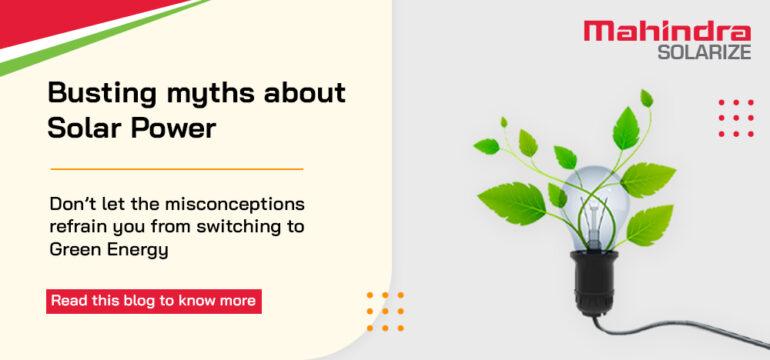India is a tropical country that receives ample solar insolation throughout the year. Most sections in India receive 4-7 kWh per sq. m every day, summing up to around 5,000 trillion kWh of energy per year.
The inception of solar energy in India
Solar energy picked up pace in the early 2000’s in India. Recently, an analysis by IRENA found that the costs for setting up solar PV projects have dropped by about 80 per cent in India between 2010 and 2018. Over the years, solar energy has established itself as the technology of choice.
With the new power generation capacity and India’s recent status of lowest-cost producer of solar power, the reflection of an ongoing shift towards renewable power as the driver of global energy transformation is evident.
How India has progressed in this sector
India recently became the world’s fifth-largest solar power deployment country overtaking Italy’s rank. India’s Solar power capacity has expanded by more than 11 times in the last five years.
India being an agricultural country has evolved its methods and procedures by using photovoltaic solar panels and solar water pumps. These come in handy in rural areas which have unstable electricity supply. The increase in population and growing economy, power consumption is only going to rise, which makes adoption of alternate forms of energy the ideal way forward to manage balance between economic growth and sustainable environment.
Myths vs facts
Solar industry is stacked with myths and misconceptions that overshadow its environmental and financial benefits. Here are a few compelling facts about solar energy in India:
- Contrary to popular belief, solar panels are affordable now more than ever. The cost of solar has dropped dramatically over the last two decades.
- Solar panels do not cause roof damage. Engineers consider structural soundness and roof integrity when proposing, designing, and installing an array.
- Solar panels can work on cloudy days as well. They produce around 10-25% of their normal power output, depending on the thickness of cloud cover.
- Solar power works seamlessly with sensitive electronics. Solar inverters are designed to monitor, synchronize, and effortlessly switch with utility-provided power eliminating any potential issues.
Why Mahindra Solarize?
Mahindra Solarize aims to accelerate and provide accessibility countrywide through innovation and technology. We are committed to utilizing our resources optimally with our products and services. We have gained the trust of our customers over the years by providing top-notch quality consistently. If you are a proactive energy seeker, we have superior solar power solutions for you.
Conclusion
The single biggest driver leading to the adoption of renewable energy is the fact that it has significant environmental benefits which help us meet our carbon emission reduction targets in our fight against climate change. It also provides exceptional return on investment (ROI) over the years.

